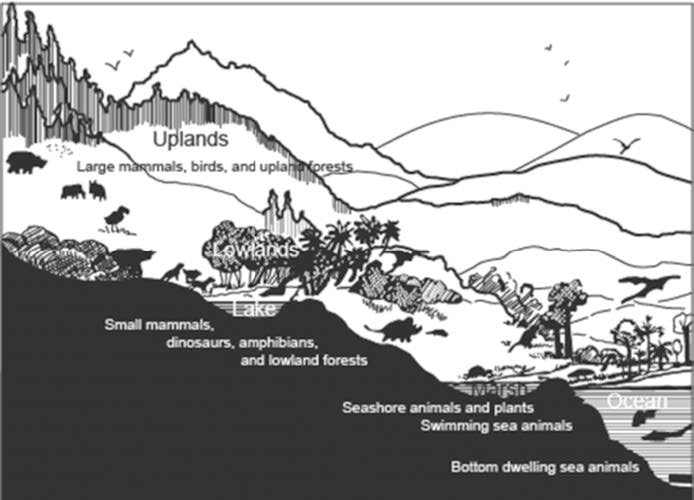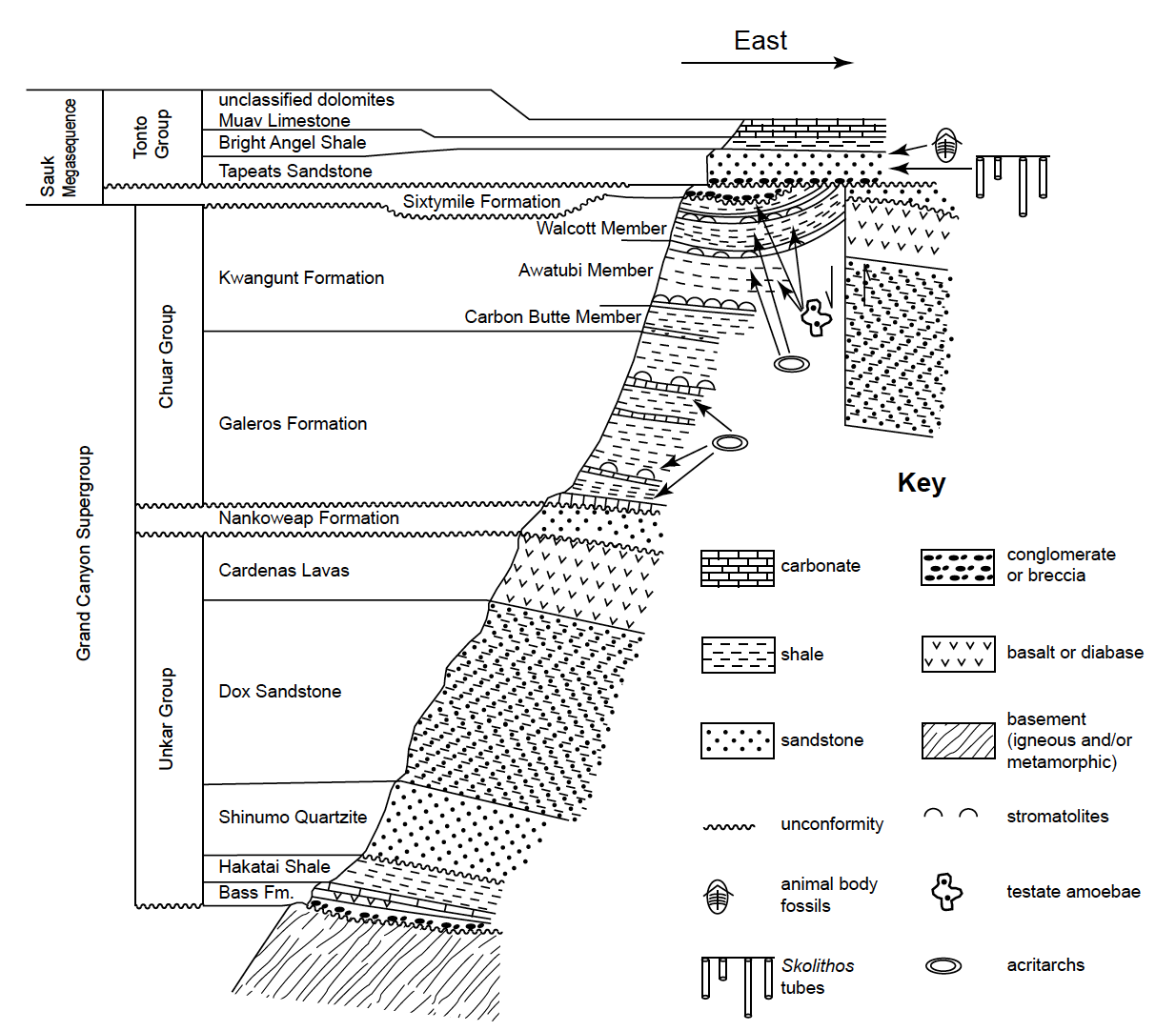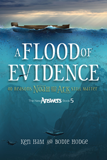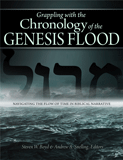
Chapter 23
Were There Any Volcanoes, High Mountains, and Earthquakes Before the Flood?
The Scriptures are silent on the issue of whether there were any volcanoes or earthquakes in the world before the Flood, but we do know there were mountains. The opening chapters of Genesis have only an abbreviated description of the earth’s early history (only six chapters describing more than 1,650 years). However, it is still possible to glean hints from the scriptural record and to a subordinate extent infer details from the geologic record, to demonstrate that the pre-Flood earth was likely very stable with no major catastrophes.
Springs and Rivers
We are told in Genesis 7:11 that the Flood began with the breaking up of “the fountains of the great deep,” a vivid description of catastrophic geologic activity. This implies that whatever caused this “breaking up” was restrained in the pre-Flood world. While the Hebrew phrase translated “the great deep” is used in Scripture to refer to and describe sub-oceanic waters, some uses also refer to subterranean waters (Isaiah 51:10 and Psalm 78:15, respectively).1 So “the fountains of the great deep” in Genesis 7:11 would have likely been primarily oceanic springs, although the possibility of these also including terrestrial springs that tapped waters residing within the earth’s crust cannot be ruled out. Thus, the geologic activity referred to by the term “breaking up” must imply deep fracturing of the earth’s crust accompanied by dramatic earth movements, volcanic eruptions, and devastating earthquakes. Such catastrophic geologic activity on a global scale must therefore have been restrained and thus absent in the pre-Flood world.
Genesis 2:6 describes a mist that went up from the earth and watered the whole face of the ground. The Hebrew word usually translated as “mist” is ed, but old translations such as the Septuagint, Syriac text, and the Vulgate all translate the word as “spring.”2 Such a translation would seem relevant in the light of other biblical evidence for the existence of terrestrial and oceanic springs. In Revelation 14:7, an angel declares, “Worship Him who made heaven and earth, the sea, and the springs of waters,” which suggests that fountains or springs were an integral part of the created earth. It would have been the same fountains that were then “broken up” at the beginning of the Flood (Genesis 7:11, “all the fountains of the great deep were broken up”). The connotation in both the Greek and Hebrew words used in these verses, respectively, is of gushing springs where water burst forth from inside the earth. It is also the connotation of a different Hebrew word used in Job 36, usually translated as “springs.”
Some have contended that Genesis 2:5 implies that there was definitely rain in the pre-Flood era, just no rain before Adam was created, as stated in the verse. They have thus suggested that the river that flowed through the Garden of Eden to water it, and then split into four rivers (Genesis 2:10–14), was fed by these fountains or springs.3 Of course, the biblical record does not specifically say that there was a connection between these fountains or springs and the rivers on the pre-Flood earth. However, since the existence of these springs and fountains on both the land surface and the ocean floor are clearly mentioned in the Scriptures, then it is not unreasonable to expect that at least some of the rivers on the pre-Flood earth were fed by springs. Furthermore, even though the Hebrew word ed in Genesis 2:6 is probably correctly translated as “mist,” the existence of springs and fountains on the pre-Flood earth is clearly mentioned in other passages.
Nevertheless, we cannot be dogmatic that there was no rain for the entire pre-Flood era, even though Genesis 2:6 indicates that the mist “watered the whole face of the ground.” In this way, the pre-Flood land surface must have been well watered and have produced lush vegetation. The latter is, of course, attested to by the huge volume of fossilized vegetation in the coal beds in the geologic record, which was destroyed and buried by the Flood.4 Thus, climatic conditions in the pre-Flood era would seem to have been ideal for animal and human habitation across the face of the earth and must have been generally warm and humid. Though the Scriptures are silent on the subject, it could perhaps be inferred that there may not have been the same extremes of weather conditions that we experience on today’s post-Flood earth. If this were the case, then it might also be inferred that there were not the same extremes in topography across the pre-Flood earth as there are today, because high mountains do affect weather patterns and conditions, for example, causing “rain shadows” and inducing snowfalls.
Topography and Mountains

Figure 1. Diagrammatic presentation of likely ecological zonation in the pre-Flood world, illustrating how animals and plants could then be buried in a roughly predictable order by the rising Flood waters.
While we are given no specific statements about the topography of the pre-Flood earth and how much it varied, we are given some hints. For example, the Garden of Eden must have been at a relatively high elevation, because we are told that the river flowing from it divided into four other rivers as it flowed downhill (Genesis 2:10–14). Furthermore, that there were mountains on the pre-Flood earth’s land surface is clearly specified in Genesis 7:19–20, where we are told that the Flood waters prevailed exceedingly on the earth so that all the high hills under the whole of the heaven were covered, and then the mountains were covered. The difference between these topographic terms “hills” and “mountains” are somewhat subjective and arbitrary, but they do indicate a difference in sizes and elevations. So while we cannot be specific about the elevation differences on the pre-Flood land surface, we could potentially infer from all these descriptions that the topographic relief then was, for instance, not as enormously different and varied as it is today, and therefore was much more subdued. After all, today’s high mountain ranges were produced during and soon after the Flood catastrophe, because they often consist in part of Flood-deposited, fossil-bearing sedimentary rock layers that have been buckled due to catastrophic crustal plate collisions during the Flood, followed immediately by major rapid uplift due to post-Flood isostatic (vertical crustal weight balance) adjustments.5
Other clues not only come from the text of Scripture, but also from the geologic record of the Flood. It has been amply argued that the fossil-bearing sedimentary rock layers in the geologic record resulted from the Flood waters rising up over the continents and progressively burying different pre-Flood ecosystems and biological communities (figure 1).6 Just as today there are different biological communities at different elevations because they are suited to those different micro-climates, it was likely the same in the pre-Flood world. Today, the rims of the Grand Canyon are covered in pine forests with squirrels, deer, and other animals, but as one hikes down into the canyon, with the loss in elevation and increasing temperatures, the biological communities gradually change, until at the bottom of the canyon the predominant vegetation is cacti typical of a desert, with different animals, such as ringtails, and seasonally, bighorn sheep.
In the fossil record, for example, dinosaur fossils are primarily found only in association with “naked seed” plants (gymnosperms) that do not have flowers, such as cycads and gingkoes. Flowering plants (angiosperms) are only rarely found fossilized with dinosaurs, and instead are found higher in the fossil record buried with mammal fossils. This placement potentially suggests that in the pre-Flood world there was a mammal-angiosperm biological community at higher elevations, geographically separated from a dinosaur-gymnosperm biological community at lower elevations.7 We can conclude this difference in elevations between these two different biological communities (biomes) in the pre-Flood world because the dinosaur-gymnosperm biome would have been buried first as the Flood waters rose higher over the continents. Also, this difference in elevations between these two biomes thus likely not only reflects different elevations, but different climatic conditions for each biological community.
Furthermore, it is clear from the description of Adam’s life in the Garden of Eden that the garden contained fruit trees (angiosperms) and beasts of the field that he named (mainly mammals). As well, the inference has already been noted that the garden was at a higher elevation, because the river running through it flowed downhill out of it and divided into four other rivers. Thus the mammal-angiosperm biological community must have been at the generally cooler higher elevations in the pre-Flood world. That would have meant the geographically separated dinosaur-gymnosperm biological community was likely found in generally warmer lowland areas. Of course, the Scriptures are clear that dinosaurs and humans lived at the same time, because dinosaurs as land animals were created on day 6 of the creation week, just before man was created.
So based on all of this discussion of what we can glean from Scripture and from the geologic record about the pre-Flood world, we can answer part of the posed question. Clearly, there were mountains in the pre-Flood world, because it was those mountains that Genesis 7:20 describes as being eventually covered by the Flood waters. However, while we cannot dogmatically say that those mountains were not high, the scriptural evidence would suggest that the pre-Flood mountains were not as high as today’s mountains. The latter were formed and thrust up to their current elevations by the catastrophic mountain-building processes during the Flood, when some fossil-bearing, Flood-deposited sedimentary rock layers were buckled and then elevated. The hints in Scripture suggest that there were conducive climatic conditions around the globe to support the lush vegetation worldwide that was subsequently buried en masse and fossilized to form the coal beds during the Flood. This would likely have precluded high mountains and major elevation and climate differences in the pre-Flood world, as would also the lack of mention of any ice or snow in the Scriptures describing the pre-Flood world.
Volcanoes and Earthquakes
The issue of whether there were any volcanoes and earthquakes in the pre-Flood world is a lot harder to discern because there is no mention of them in the scriptural account, unlike the mountains. Today volcanic eruptions and earthquakes often result in destruction and loss of life, including nephesh-bearing animal life. However, prior to the Fall and the resultant Curse, we would have to assert that there were no physical events that would have resulted in the death of any nephesh-bearing creatures. In Genesis 1:31, at the end of day 6 of the creation week, God declared that all He has made was “very good,” with animals and man eating only plants. And Paul reminds us in Romans 8:20–22 that today’s world is subject to corruption and death because of man’s sin. So these scriptural details would seem to preclude the possibility of volcanoes and earthquakes in the pre-Flood world.
It is certainly true that there are no fossils of nephesh-bearing animals in the geologic record below the fossil-bearing sedimentary rock layers that represent such powerful evidence of the Flood cataclysm, when the ocean waters flooded over the continents and all land-dwelling, air-breathing, nephesh-bearing animals outside the ark perished (Genesis 7:17–24). However, the geologic record may still give us some clues.
The rocks found below where the evidence of the Flood begins are very thick and extensive. They are foundational to the structure of today’s continents. Yet they also represent the astounding results of God’s creative activity during the creation week to build the land on which would be man’s home, followed by the minor, non-destructive geologic activity of the pre-Flood world. Obviously, there could not have been any catastrophic geologic activity across the earth after God created the dry land on day 3 of the creation week, because any such catastrophic geologic activity would have impacted the sea creatures, the land creatures, and man that God created on days 5 and 6. This matches the lack of any such fossils in the geologic record of the creation week and pre-Flood eras.
What we do see in some pre-Flood era sedimentary rocks that is relevant to understanding the topography and environmental conditions in the pre-Flood world are occasional fossilized stromatolites, layered structures probably built by algal mats.8 Today’s rare living stromatolites are usually found in intertidal zones and on the shallow sea floor where the algal mats trap and bind sediment particles to build these structures. The fossilized stromatolites found in pre-Flood era sedimentary rocks usually occur in thick sequences of limestones and related rocks, including cherts, unusual rocks likely produced from hot water springs. Thus, it has been proposed that in the pre-Flood world there could have been a unique ecosystem consisting of stromatolite reefs built in association with hydrothermal springs on the shallow ocean floor some distance from, and fringing, the coastline of the pre-Flood supercontinent and enclosing a wide, shallow lagoon inhabited by now-extinct, unusual marine invertebrates.9 Confirming evidence of just such a stromatolite reef has been documented in what have been interpreted as pre-Flood shallow ocean floor sedimentary rock layers now exposed in the eastern Grand Canyon.10

Figure 2. The strata sequence of Cambrian (earliest Flood) and Precambrian (pre-Flood) sedimentary rock layers of eastern Grand Canyon, schematically showing the relative position of the Cardenas Basalt lavas and the strata thicknesses to scale.
However, none of these details from both Scripture and the geologic record precludes the possibility of minor volcanic eruptions of a non-explosive nature on the deeper ocean floor of the pre-Flood world, well away from the creatures that inhabited the shallow ocean floor surrounding the pre-Flood supercontinent. For example, in the eastern Grand Canyon exposed among the pre-Flood rocks are lava flows of the Cardenas Basalt (figure 2).11 They outcrop not far below the pre-Flood/Flood boundary in the Grand Canyon strata record. Above the Cardenas Basalt lava flows are the sedimentary rock layers containing evidence that they accumulated on the pre-Flood ocean floor, including the fossilized stromatolite reef originally built by algal mats on the shallow sea-floor adjacent to hydrothermal springs. Because there are no shallow marine creatures in the rocks above and below the Cardenas Basalt lava flows, the latter would appear to have erupted on the deeper ocean floor. As basalt eruptions are not explosive and these erupted on the deep ocean floor, then no destruction of animal life would have resulted. So there would have been no impact from these volcanic eruptions on the pre-Flood land surface to affect land animals and man.
Nevertheless, earthquakes usually accompany the lead-up to volcanic eruptions, due to the molten rock moving up inside the earth into the throat of the volcano. It is because of such earthquakes that volcanologists are able to predict and warn of impending volcanic eruptions. Thus, since there were likely such volcanic eruptions during the pre-Flood era, we cannot rule out the possibility of accompanying earthquakes. Whether they were felt by the people living at the time, we have no indication whatsoever. But if such volcanic eruptions were only on the deep ocean floor, far away from the pre-Flood supercontinent, then it is not likely the people noticed any of the accompanying earthquakes. From what we can glean from the scriptural comments about life in the pre-Flood era, people were so engrossed in the pursuit of pleasure and sin (Genesis 6:5, 11–12), as well as the normal routines of living (as Jesus said in Matthew 24:37–39; Luke 17:26–27), ignoring Noah’s preaching (2 Peter 2:5), that they had no premonition of the Flood coming from any earthquakes or volcanic eruptions until it was too late: “the Flood came, and took them all away” (Matthew 24:39).
Conclusions
While the Scriptures are silent on the issue of whether there were any volcanoes or earthquakes in the world before the Flood, we do know there were mountains. Since all the high hills and mountains are specifically mentioned as being inundated by the waters of the Flood as they prevailed during the first 40 days of that global cataclysm, then mountains must have existed in the pre-Flood world. But those mountains were likely not nearly as high as today’s mountains (formed out of buckled, Flood-deposited rock layers that were then uplifted), because the pre-Flood mountains were evidently upland areas like the Garden of Eden, inhabited by flowering plants, mammals, and people.
On the other hand, we have to infer rather sketchily from the geologic record that there were likely some volcanic eruptions accompanied by earthquakes in the pre-Flood world, but these occurred far away from human habitations out on the deep ocean floor, where they had no impact on people or animals. In all probability, there were no mountainous volcanoes across the pre-Flood land surface as we have scattered across today’s world, and thus no devastating earthquakes and volcanic eruptions. Since there are no nephesh-bearing creatures in pre-Flood rocks, the pre-Flood earth was likely very stable with no major catastrophes.
The New Answers Book 4
Building on the previous New Answers Books, learn more about the Gospel and a young earth, death of plants and leaves, dragons, religious wars, cavemen, science, living fossils, and more.
Read Online Buy BookFootnotes
- David M. Fouts and Kurt P. Wise, “Blotting and Breaking Up: Miscellaneous Hebrew Studies in Geocatastrophism,” in Proceedings of the Fourth International Conference on Creationism, Robert E. Walsh, ed. (Pittsburgh, PA: Creation Science Fellowship, 1998), p. 217–228.
- Gordon J. Wenham, Genesis 1–15, vol. 1, Word Biblical Commentary (Waco, TX: Word Books, 1987), p. 58; Victor P. Hamilton, The Book of Genesis: Chapters 1–17, The New International Commentary on the Old Testament (Grand Rapids, MI: William B. Eerdmans, 1990), p. 154.
- Joachim Scheven, “The Geological Record of Biblical Earth History,” Origins (Biblical Creation Society UK) 3, no. 8 (1990): 8–13; Joachim Scheven, “Stasis in the Fossil Record as Confirmation of the Belief in Biblical Creation,” in Proceedings of the Second International Conference on Creationism, vol. 1, Robert E. Walsh and Christopher L. Brooks, eds. (Pittsburgh, PA: Creation Science Fellowship, 1990), p. 197–215.
- Andrew A. Snelling, “How Did We Get All This Coal?” Answers (April–June 2013): p. 70–73.
- Steven A. Austin, John R. Baumgardner, D. Russell Humphreys, Andrew A. Snelling, Larry Vardiman, and Kurt P. Wise, “Catastrophic Plate Tectonics: A Global Flood Model of Earth History,” in Proceedings of the Third International Conference on Creationism, Robert E. Walsh, ed. (Pittsburgh, PA: Creation Science Fellowship, 1994), p. 609–621.
- Harold W. Clark, The New Diluvialism (Angwin, CA: Science Publications, 1946); Harold G. Coffin, Origin by Design (Hagerstown, MD: Review and Herald Publishing Association, 1983); Andrew A. Snelling, “Doesn’t the Order of Fossils in the Rock Record Favor Long Ages?” in The New Answers Book 2, Ken Ham, gen. ed. (Green Forest, AR: Master Books, 2008), p. 341–354; Kurt P. Wise, “Exotic Communities Buried by the Flood,” Answers (October–December 2008): p. 44–45; Andrew A. Snelling, “Order in the Fossil Record,” Answers (January–March 2010): p. 64–68; Andrew A. Snelling, “Paleontological Issues: Deciphering the Fossil Record of the Flood and Its Aftermath,” in Grappling with the Chronology of the Genesis Flood, Steven W. Boyd and Andrew A. Snelling, eds. (Green Forest, AR: Master Books, 2013).
- Kurt P. Wise, Faith, Form, and Time (Nashville, TN: Broadman and Holman Publishers, 2002), p. 173–174.
- Georgia Purdom and Andrew A. Snelling, “Survey of Microbial Composition and Mechanisms of Living Stromatolites of the Bahamas and Australia: Developing Criteria to Determine the Biogenicity of Fossil Stromatolites,” in Proceedings of the Seventh International Conference on Creationism, Mark F. Horstemeyer, ed. (Pittsburgh, PA: Creation Science Fellowship, 2013).
- Kurt P. Wise, “The Hydrothermal Biome: A Pre-Flood Environment,” in Proceedings of the Fifth International Conference on Creationism, Robert L. Ivey, ed. (Pittsburgh, PA: Creation Science Fellowship, 2003), p. 359–370.
- Kurt P. Wise and Andrew A. Snelling, “A Note on the Pre-Flood/Flood Boundary in the Grand Canyon,” Origins (Geoscience Research Institute) 58 (2005): p. 7–29.
- Steven A. Austin and Andrew A. Snelling, “Discordant Potassium-Argon Model and Isochron ‘Ages’ for Cardenas Basalt (Middle Proterozoic) and Associated Diabase of Eastern Grand Canyon, Arizona,” in Proceedings of the Fourth International Conference on Creationism, p. 35–51; J.D. Hendricks and G.M. Stevenson, “Grand Canyon Supergroup: Unkar Group,” in Stanley S. Beus and Michael Morales, eds., Grand Canyon Geology, 2nd ed. (New York, NY: Oxford University Press, 2003), p. 39–52.
Recommended Resources

Answers in Genesis is an apologetics ministry, dedicated to helping Christians defend their faith and proclaim the good news of Jesus Christ.
- Customer Service 800.778.3390
- Available Monday–Friday | 9 AM–5 PM ET
- © 2025 Answers in Genesis



